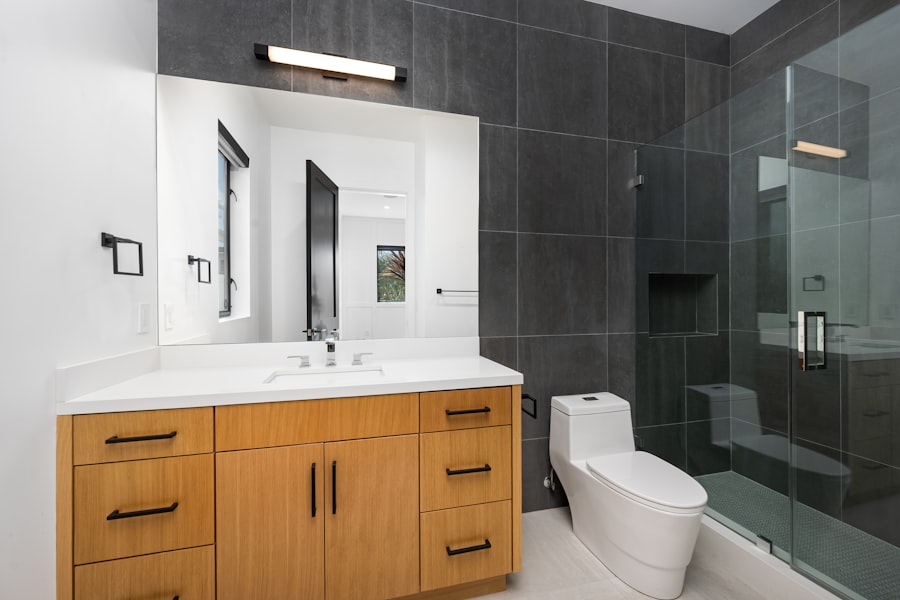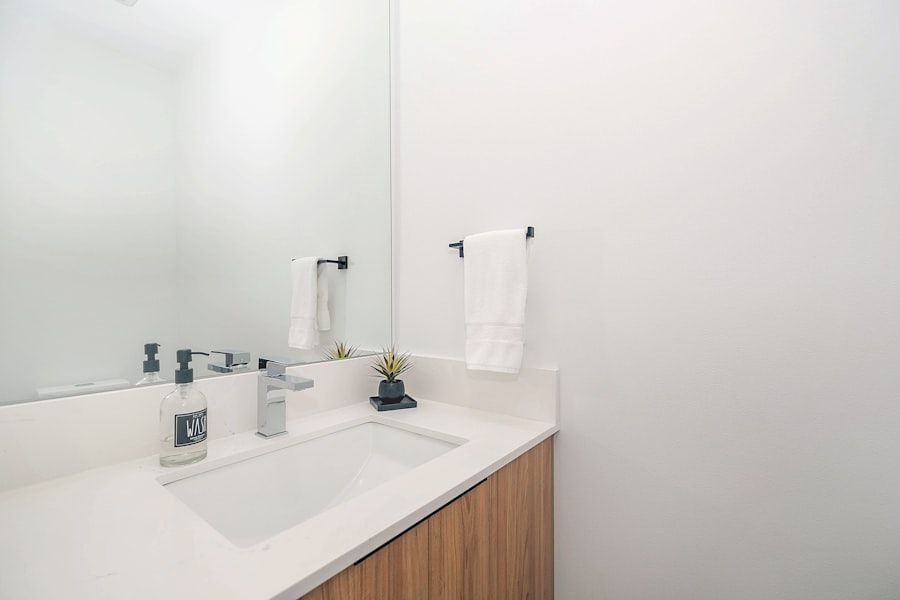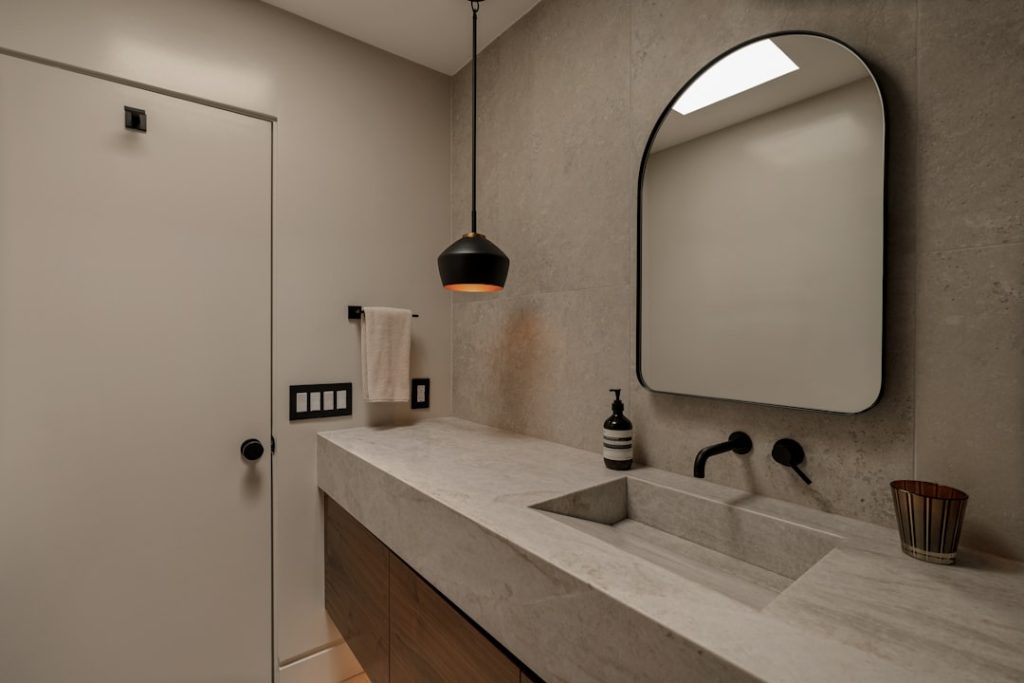The average cost of a bathroom remodel can vary significantly based on several factors, including the size of the bathroom, the extent of the renovation, and the quality of materials used. On average, homeowners can expect to spend anywhere from $10,000 to $25,000 for a full bathroom remodel. This range encompasses a variety of projects, from minor updates such as new fixtures and paint to complete overhauls that involve reconfiguring the layout and installing high-end materials.
For instance, a small powder room may only require a budget of around $5,000 to $10,000, while a master bathroom remodel could easily exceed $30,000 if luxury features are included. In addition to the size and scope of the project, regional differences can also play a significant role in determining costs. Urban areas with a higher cost of living often see increased labor and material prices compared to rural locations.
For example, a bathroom remodel in New York City may cost significantly more than a similar project in a small town in the Midwest. Furthermore, the average cost can fluctuate based on market trends and economic conditions, making it essential for homeowners to conduct thorough research before embarking on their remodeling journey.
Key Takeaways
- Bathroom remodel costs vary widely based on size, materials, and labor.
- Key cost factors include fixtures, design complexity, and contractor fees.
- Setting a realistic budget requires detailed planning and cost estimation.
- Labor costs can be a significant portion of the total remodel expense.
- Identifying hidden costs and using money-saving tips can maximize remodel value.
Factors that Impact the Cost of a Bathroom Remodel
Several key factors influence the overall cost of a bathroom remodel, and understanding these elements can help homeowners make informed decisions. One of the most significant factors is the size of the bathroom. Larger bathrooms typically require more materials and labor, which can drive up costs.
Additionally, the complexity of the design plays a crucial role; intricate layouts or custom features will often necessitate more skilled labor and higher-quality materials, further increasing expenses. Another critical factor is the choice of materials. High-end finishes such as marble countertops, custom cabinetry, and designer fixtures can substantially elevate the budget.
Conversely, opting for more affordable alternatives like laminate countertops or stock cabinetry can help keep costs in check. Additionally, the condition of existing plumbing and electrical systems can impact costs; if significant upgrades or repairs are needed, this can add to the overall expense. Homeowners should also consider whether they want to maintain the current layout or make structural changes, as moving plumbing or electrical lines can significantly increase labor costs.
Setting a Realistic Budget for Your Bathroom Remodel

Establishing a realistic budget is one of the most critical steps in planning a bathroom remodel. Homeowners should begin by determining how much they are willing to spend and what their priorities are for the project. It is essential to create a detailed list of desired features and improvements, which can help in allocating funds appropriately.
For instance, if a homeowner prioritizes high-quality fixtures but is willing to compromise on tile choices, they can adjust their budget accordingly. In addition to setting an initial budget, it is wise to include a contingency fund for unexpected expenses that may arise during the remodeling process. A common recommendation is to set aside 10% to 20% of the total budget for contingencies.
This buffer can help cover unforeseen issues such as water damage or structural repairs that may not be apparent until work begins. By planning for these potential costs upfront, homeowners can avoid financial strain and ensure that their remodeling project stays on track.
Estimating the Cost of Materials for Your Bathroom Remodel
| Material | Average Cost per Unit | Typical Quantity Needed | Estimated Total Cost | Notes |
|---|---|---|---|---|
| Tiles (floor and wall) | 5 to 15 per sq ft | 100 sq ft | 500 to 1500 | Includes ceramic and porcelain options |
| Vanity | 200 to 1500 each | 1 | 200 to 1500 | Depends on size and material |
| Toilet | 100 to 500 each | 1 | 100 to 500 | Standard or water-saving models |
| Shower/Tub | 300 to 2000 each | 1 | 300 to 2000 | Prefabricated or custom options |
| Sink | 50 to 400 each | 1 | 50 to 400 | Vessel, undermount, or pedestal |
| Faucets | 50 to 300 each | 2 | 100 to 600 | Includes sink and shower faucets |
| Lighting Fixtures | 50 to 200 each | 3 | 150 to 600 | Vanity and ceiling lights |
| Paint | 30 to 60 per gallon | 2 gallons | 60 to 120 | Moisture-resistant paint recommended |
| Drywall and Backer Board | 10 to 20 per sheet | 10 sheets | 100 to 200 | Water-resistant backer board for wet areas |
When estimating the cost of materials for a bathroom remodel, it is essential to consider all components involved in the project. This includes everything from flooring and wall coverings to fixtures and cabinetry. For example, tile flooring can range from $1 to $20 per square foot depending on the material chosen; ceramic tiles are generally more affordable than natural stone options like granite or marble.
Similarly, vanities can vary widely in price based on size and material; stock vanities may start at around $200, while custom-built options can easily exceed $2,000. In addition to these primary materials, homeowners should also account for smaller items such as faucets, showerheads, and lighting fixtures. These elements can add up quickly; for instance, a high-end faucet may cost between $200 and $500, while more budget-friendly options might be available for under $100.
It is also important to consider installation costs associated with these materials; some items may require professional installation, which can further impact the overall budget. By carefully researching and selecting materials that align with both aesthetic preferences and budget constraints, homeowners can create a beautiful bathroom without overspending.
Hiring Professionals: How Much Does Labor Cost for a Bathroom Remodel?
Labor costs are a significant component of any bathroom remodel budget and can vary based on location, contractor experience, and project complexity. On average, homeowners can expect to pay between $50 and $150 per hour for skilled labor in their bathroom remodels. General contractors may charge a flat fee or a percentage of the total project cost—typically ranging from 10% to 20%.
For example, if a bathroom remodel is estimated at $15,000, hiring a contractor might add an additional $1,500 to $3,000 to the overall cost. It is crucial for homeowners to thoroughly vet potential contractors before making hiring decisions. Checking references, reviewing past work, and obtaining multiple quotes can help ensure that they find a qualified professional who fits their budget and vision.
Additionally, clear communication about expectations and timelines is essential to avoid misunderstandings that could lead to increased labor costs or delays in project completion. By investing time in selecting the right professionals for their remodel, homeowners can achieve high-quality results while managing labor expenses effectively.
Hidden Costs to Consider During a Bathroom Remodel

While many homeowners focus on visible expenses when planning their bathroom remodels, hidden costs can often catch them off guard. One common hidden cost is related to permits and inspections; depending on local regulations, certain renovations may require permits that come with associated fees. Failing to account for these costs upfront can lead to unexpected financial strain during the remodeling process.
Another potential hidden cost involves unforeseen repairs that may arise once work begins. For instance, if walls are opened up during demolition, homeowners may discover mold or outdated plumbing that needs immediate attention. These issues can significantly increase both time and budget constraints if not anticipated beforehand.
Additionally, changes in design or scope during the remodeling process—often referred to as “scope creep”—can lead to increased costs as well. Homeowners should remain vigilant about their original plans and be cautious about making last-minute changes that could impact their budget.
Ways to Save Money on Your Bathroom Remodel
There are several strategies homeowners can employ to save money on their bathroom remodel without sacrificing quality or aesthetics. One effective approach is to focus on cosmetic updates rather than complete renovations. For example, simply repainting walls or replacing hardware on cabinets can refresh the space at a fraction of the cost of a full remodel.
Additionally, refinishing existing fixtures such as bathtubs or cabinets can provide an updated look without the expense of new installations. Another way to save money is by shopping smart for materials and fixtures. Homeowners should consider visiting local home improvement stores during sales events or exploring online marketplaces for discounted items.
Purchasing surplus or clearance items can lead to significant savings while still allowing for high-quality finishes. Furthermore, opting for mid-range materials instead of luxury options can help keep costs manageable while still achieving an attractive result.
Getting the Most Value for Your Money: Tips for a Successful Bathroom Remodel
To maximize value during a bathroom remodel, homeowners should prioritize both functionality and aesthetics in their design choices. Investing in durable materials that withstand moisture and wear over time will not only enhance the space’s appearance but also reduce long-term maintenance costs. For instance, choosing high-quality tile or water-resistant paint can prevent issues like mold growth or peeling paint down the line.
Additionally, focusing on energy-efficient fixtures such as low-flow toilets and LED lighting can lead to long-term savings on utility bills while contributing positively to environmental sustainability. Homeowners should also consider incorporating universal design principles that enhance accessibility; features like grab bars or curbless showers not only improve usability but also increase property value by appealing to a broader range of potential buyers. By carefully planning each aspect of their bathroom remodel—from budgeting and material selection to hiring professionals—homeowners can create a beautiful and functional space that meets their needs while providing excellent value for their investment.




